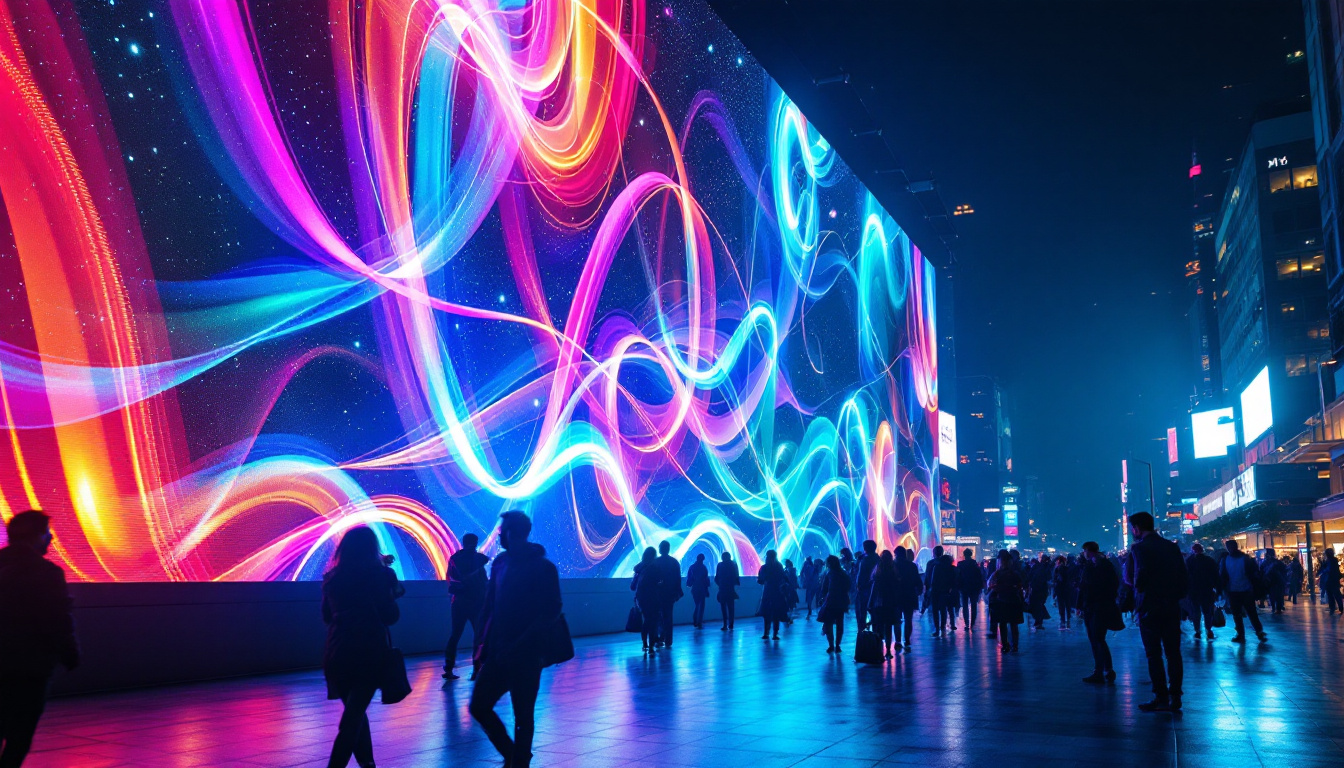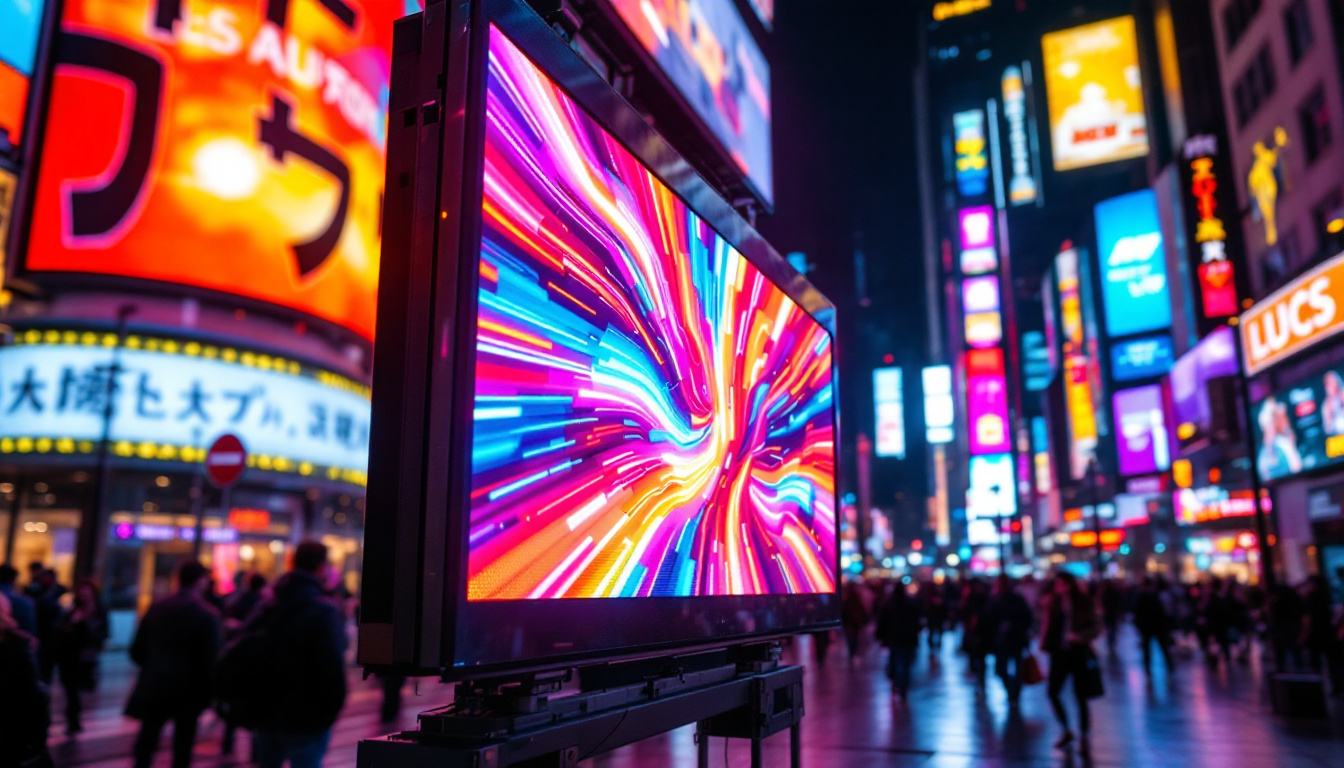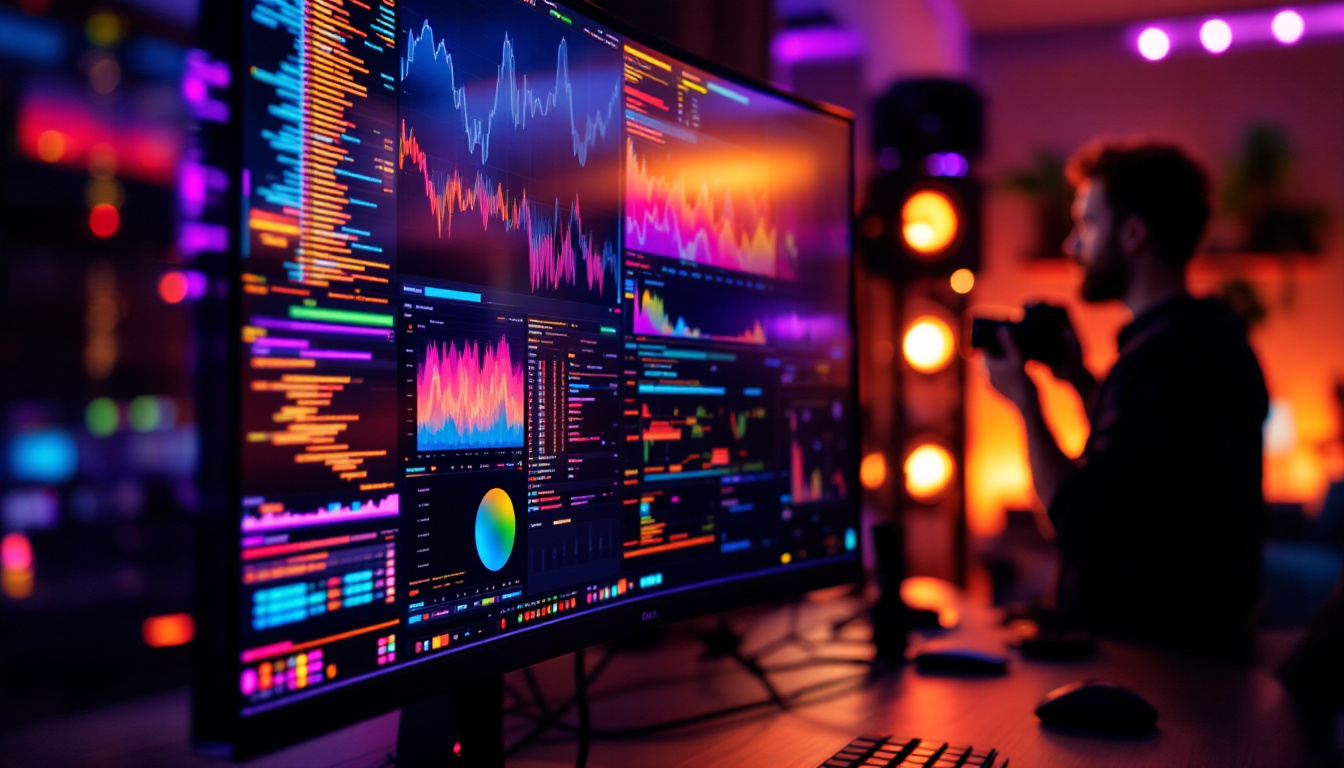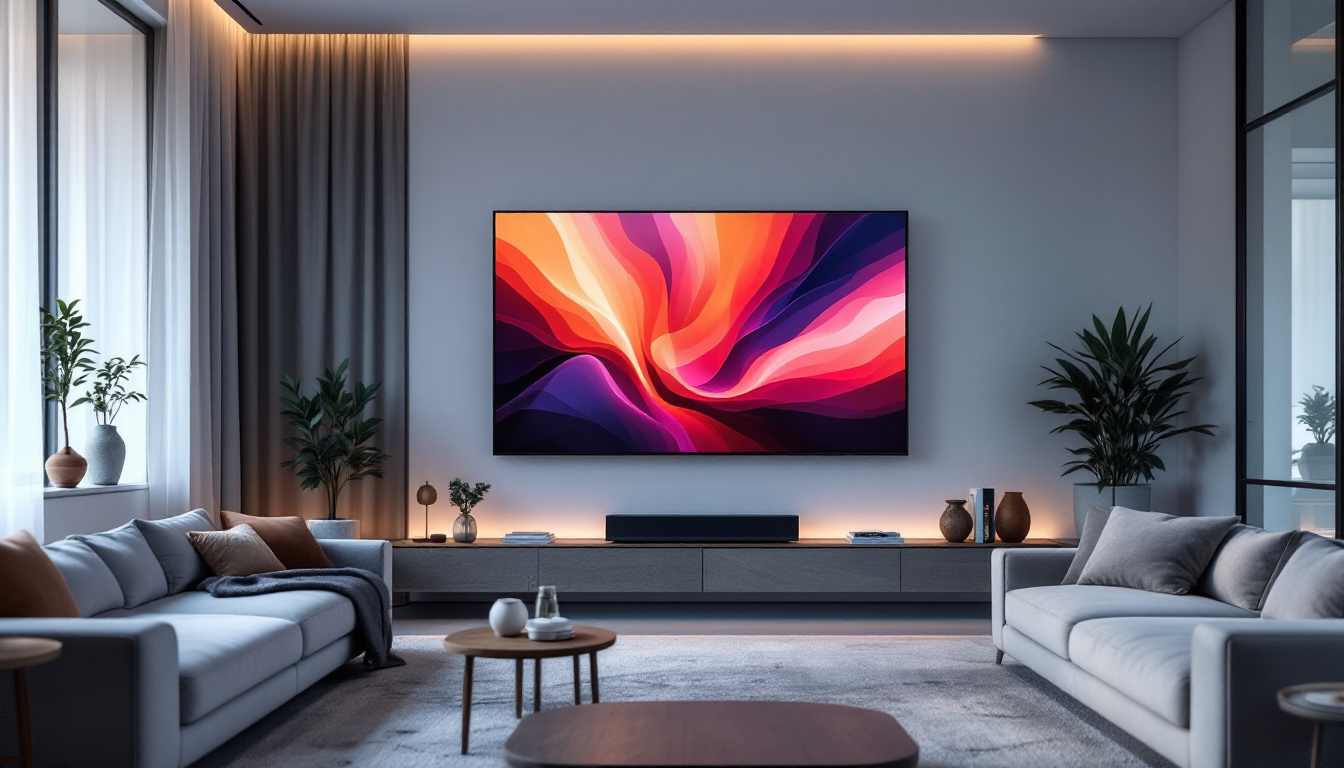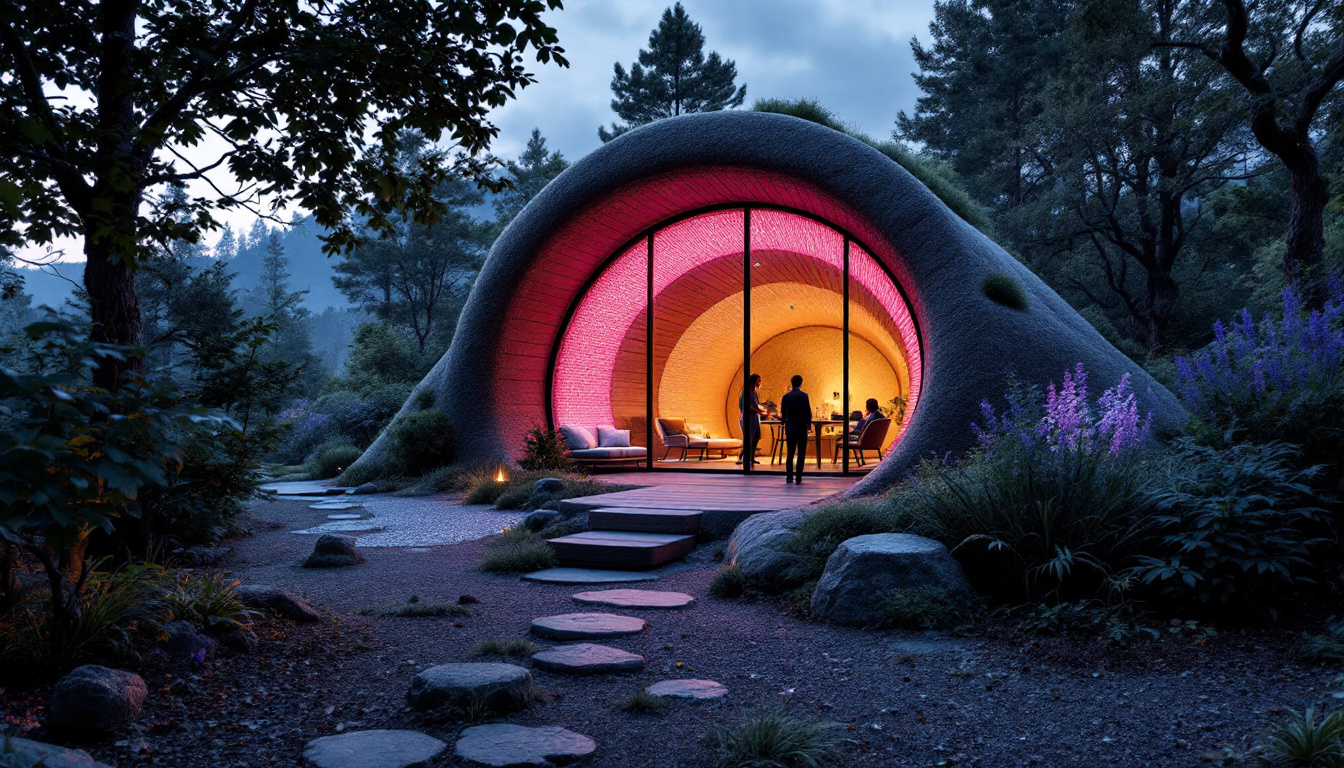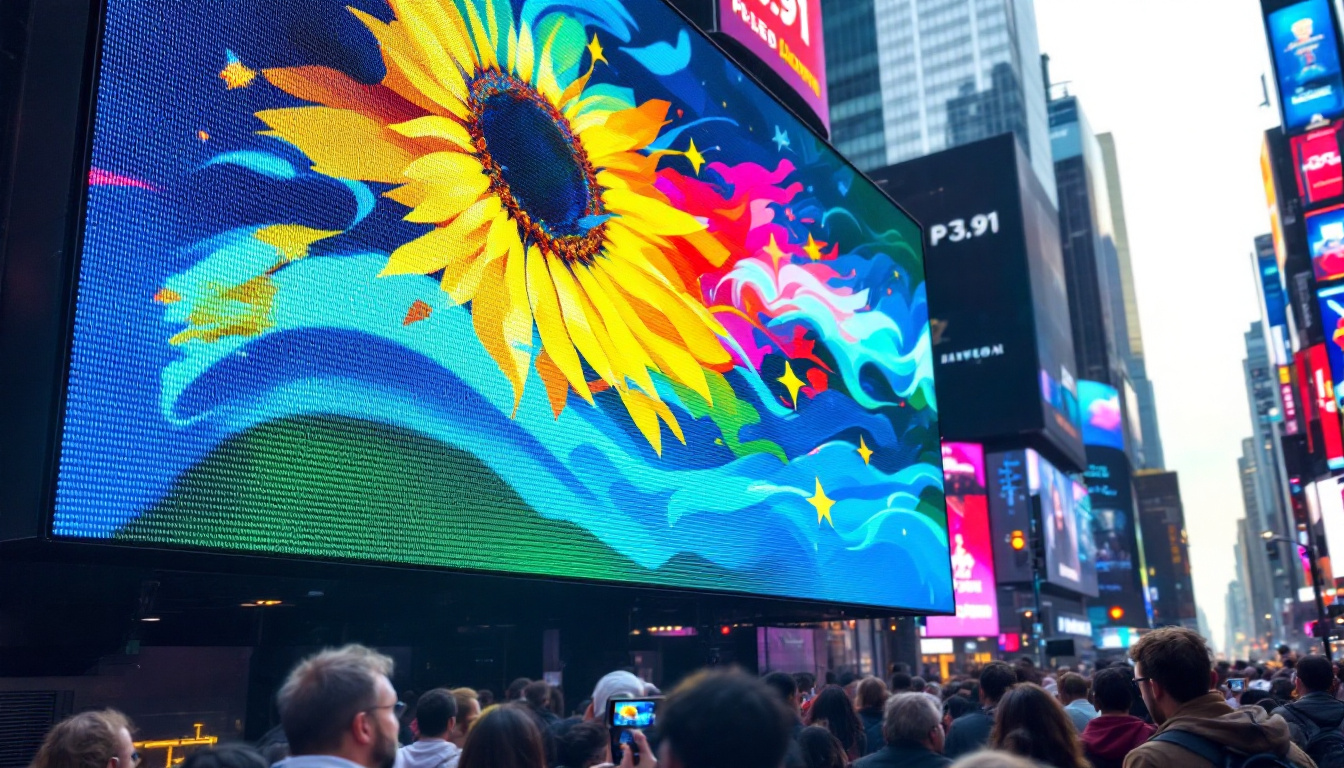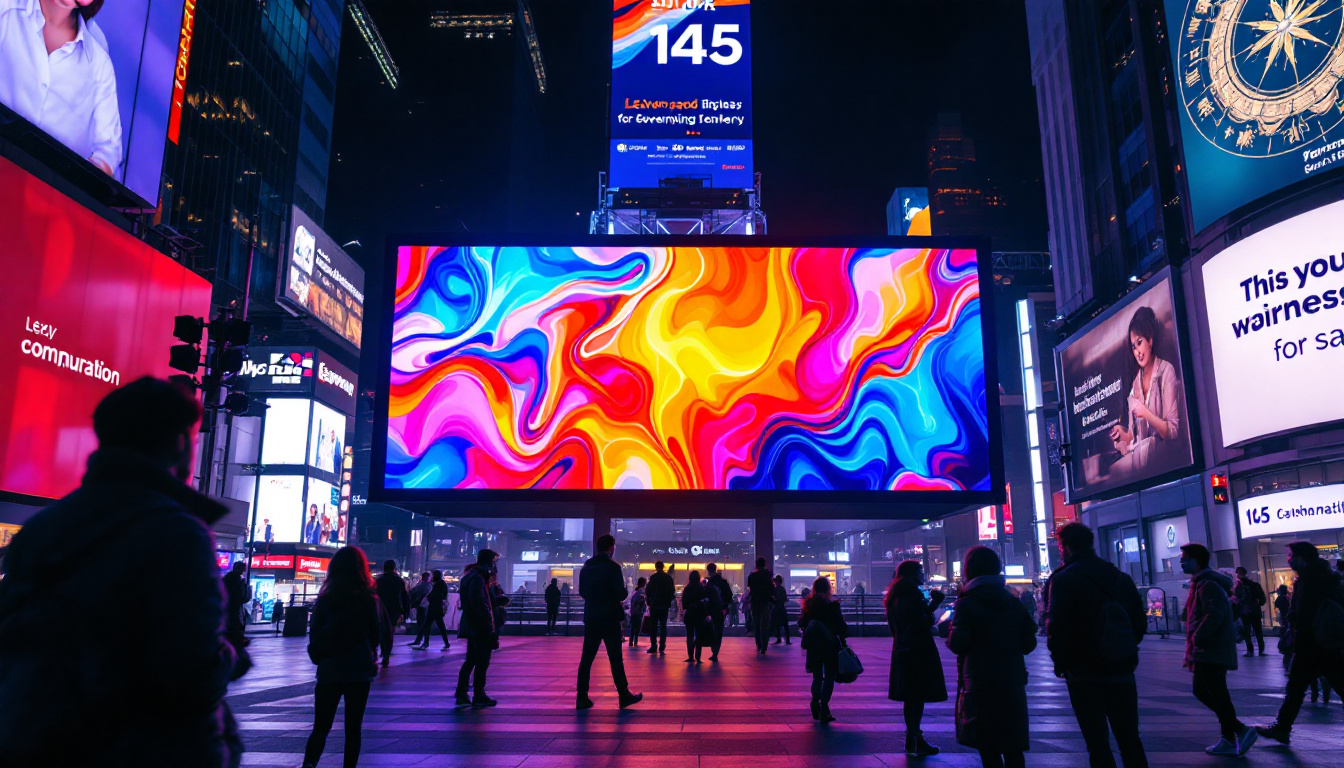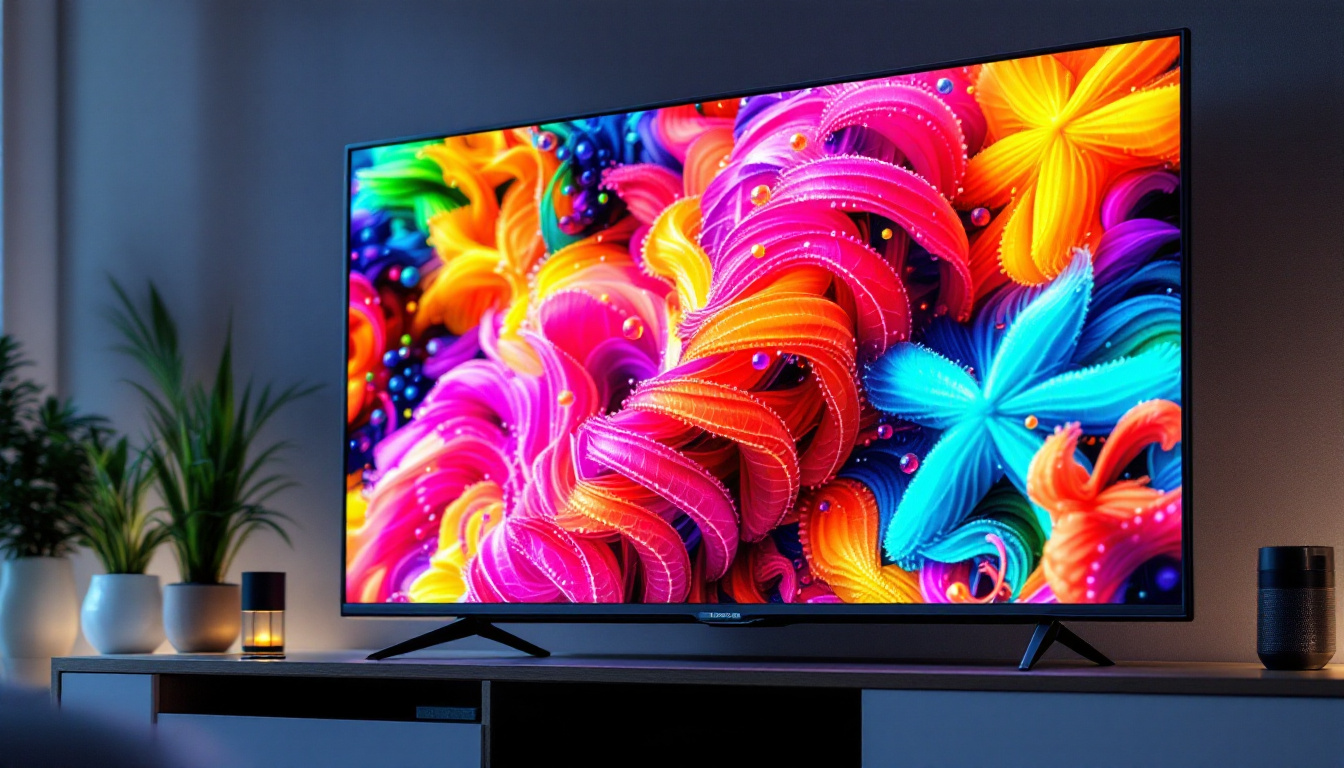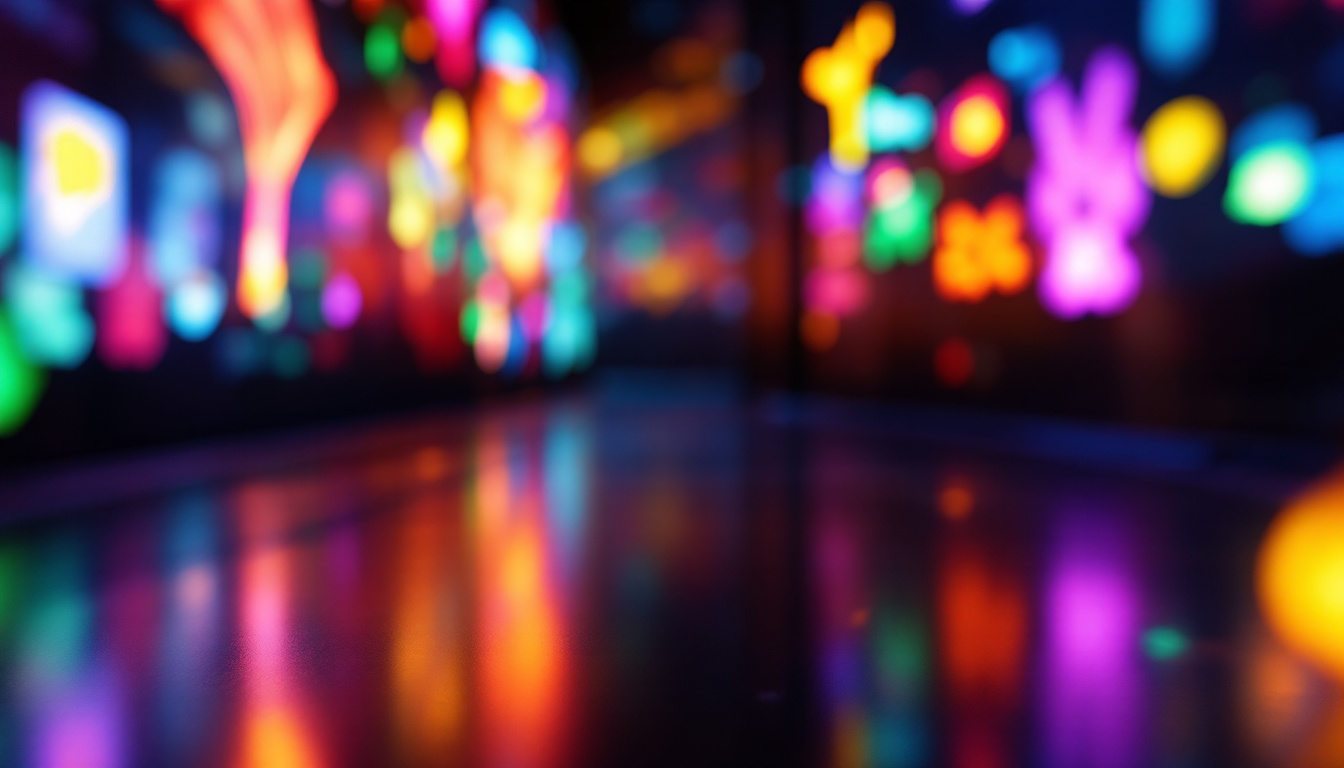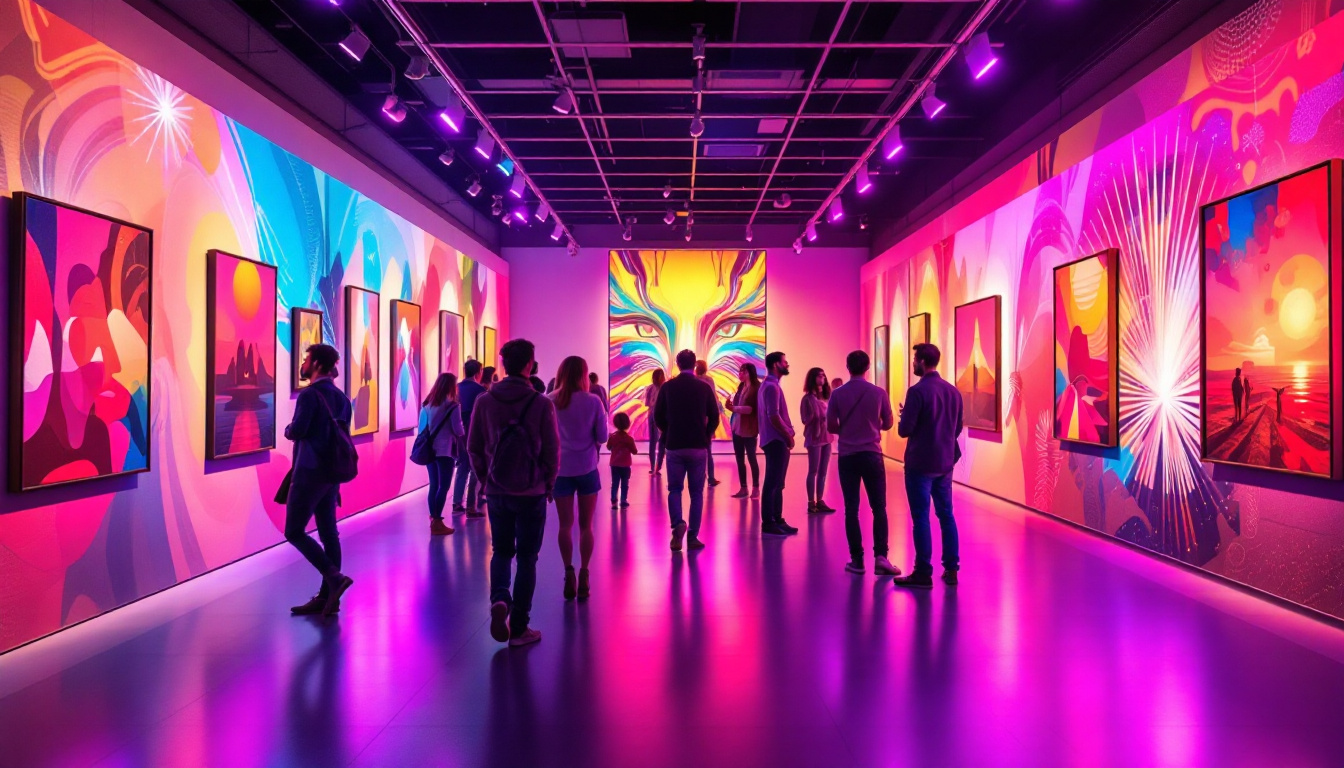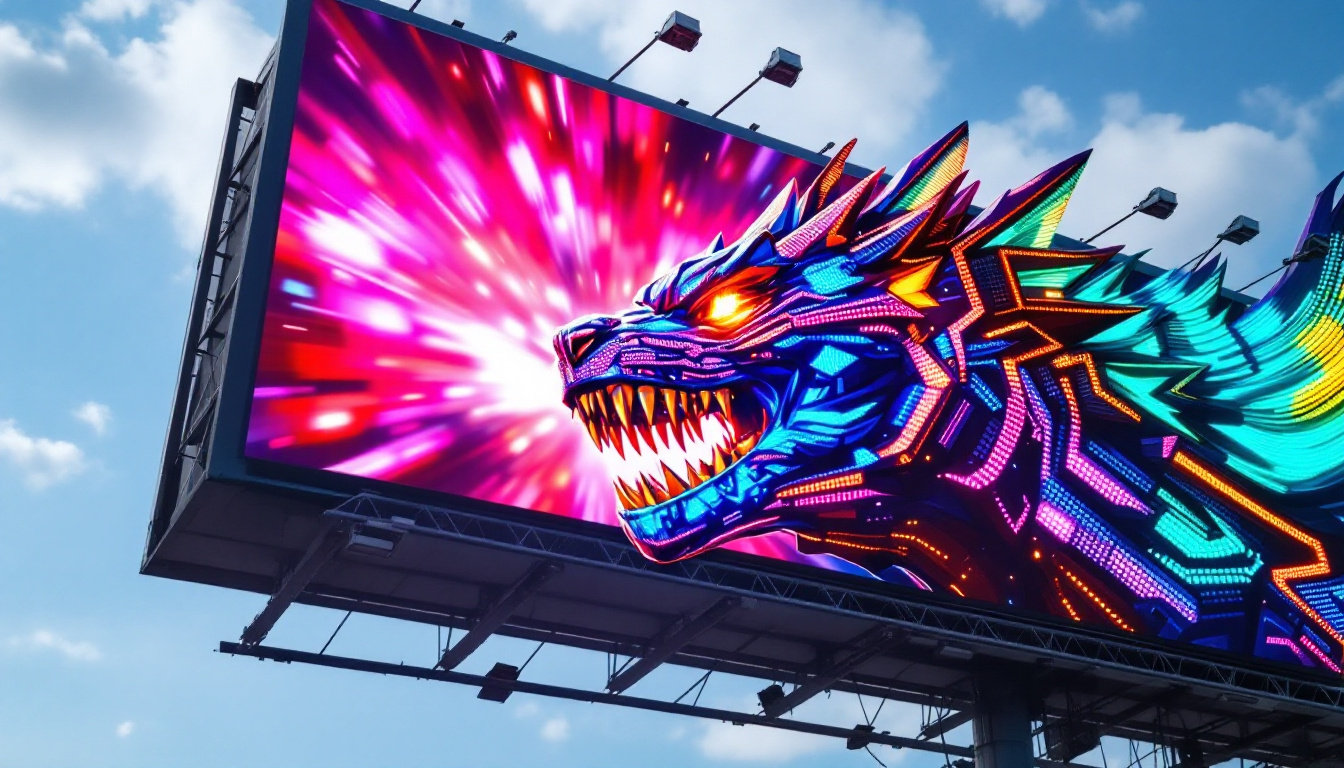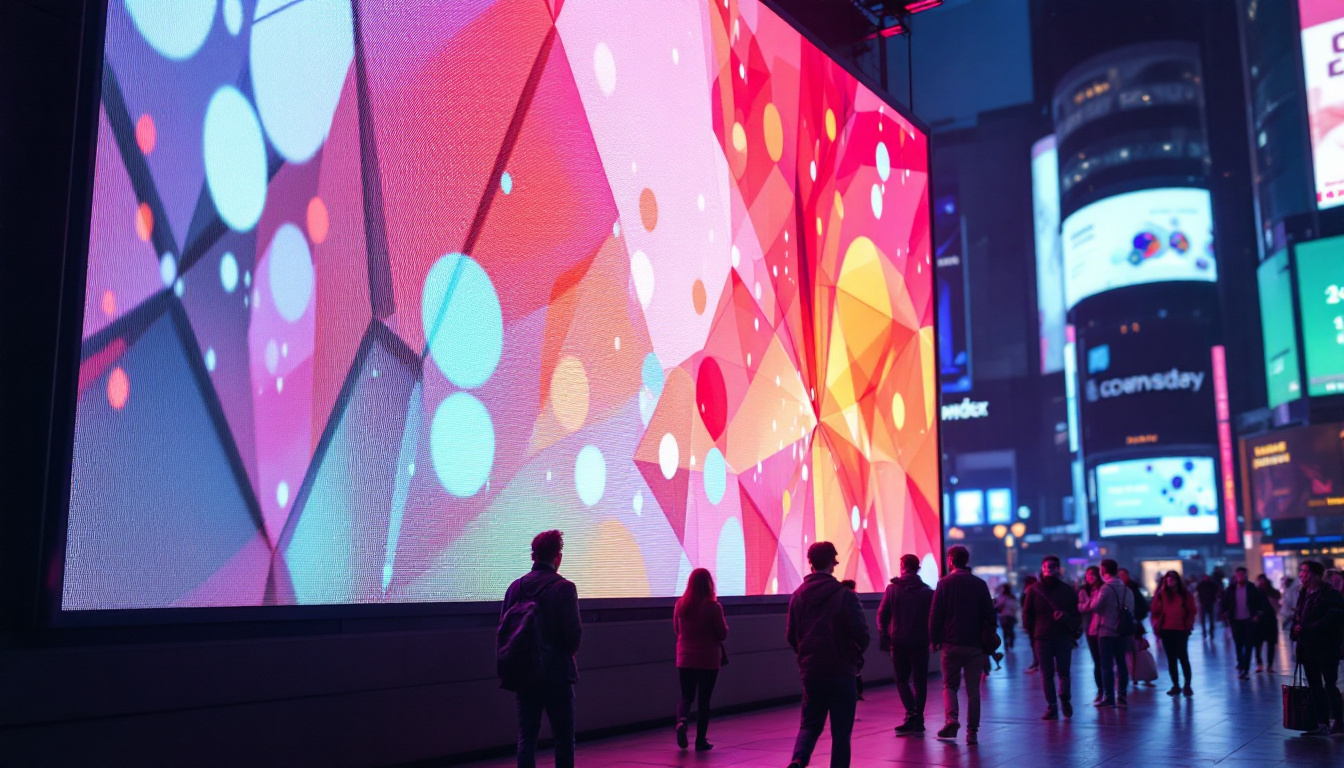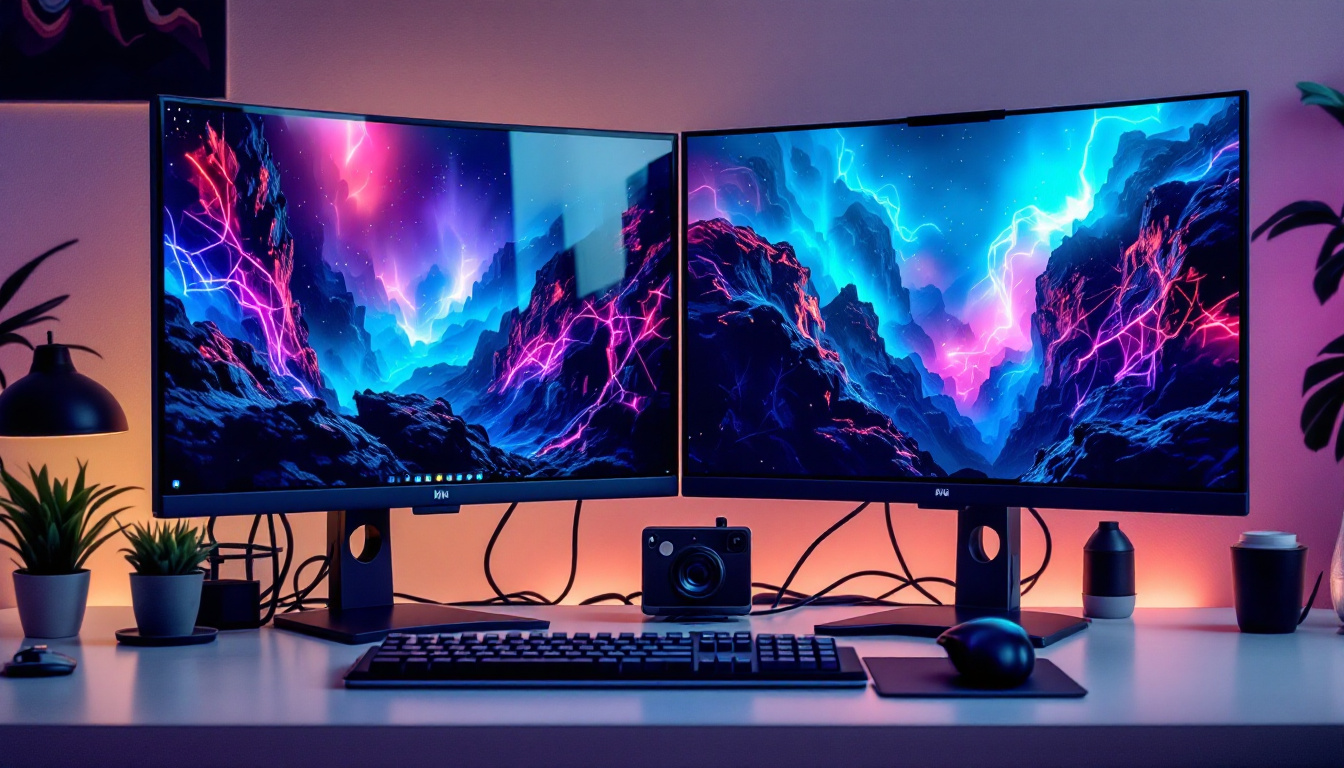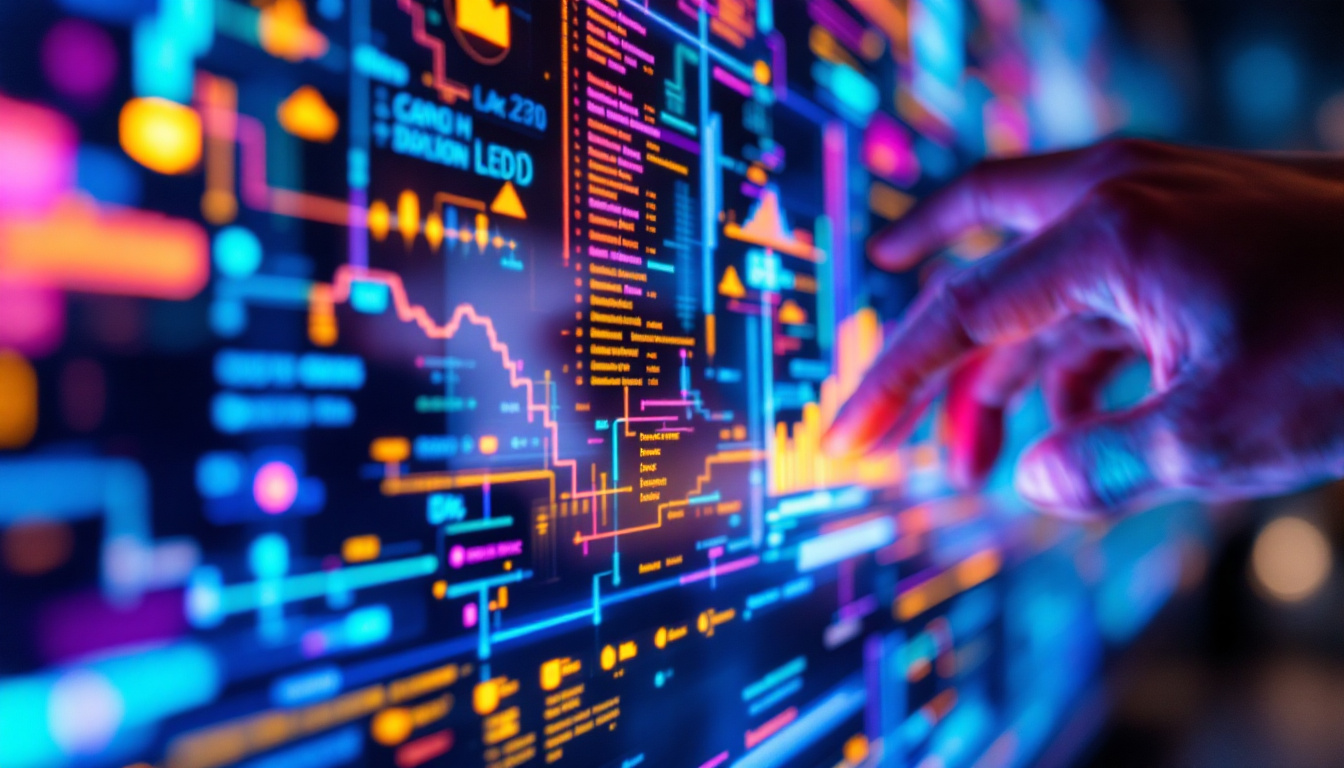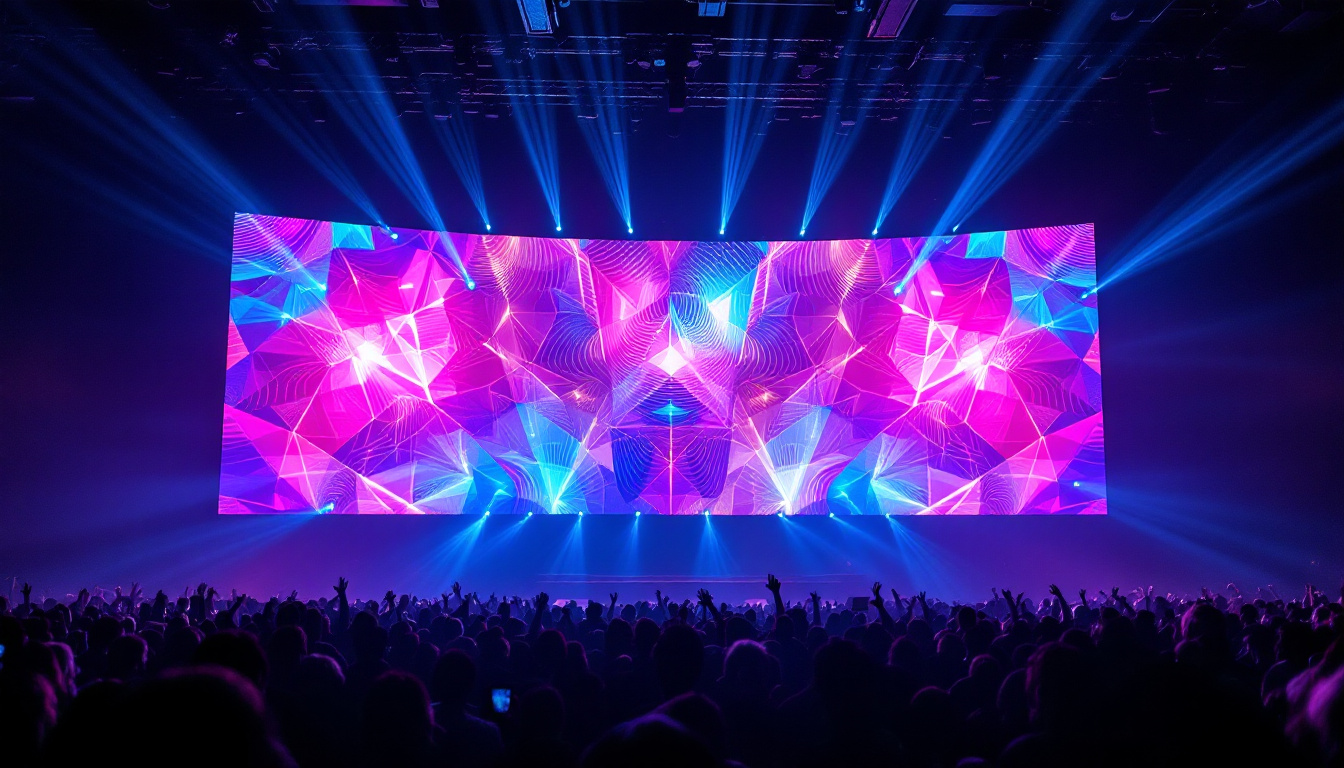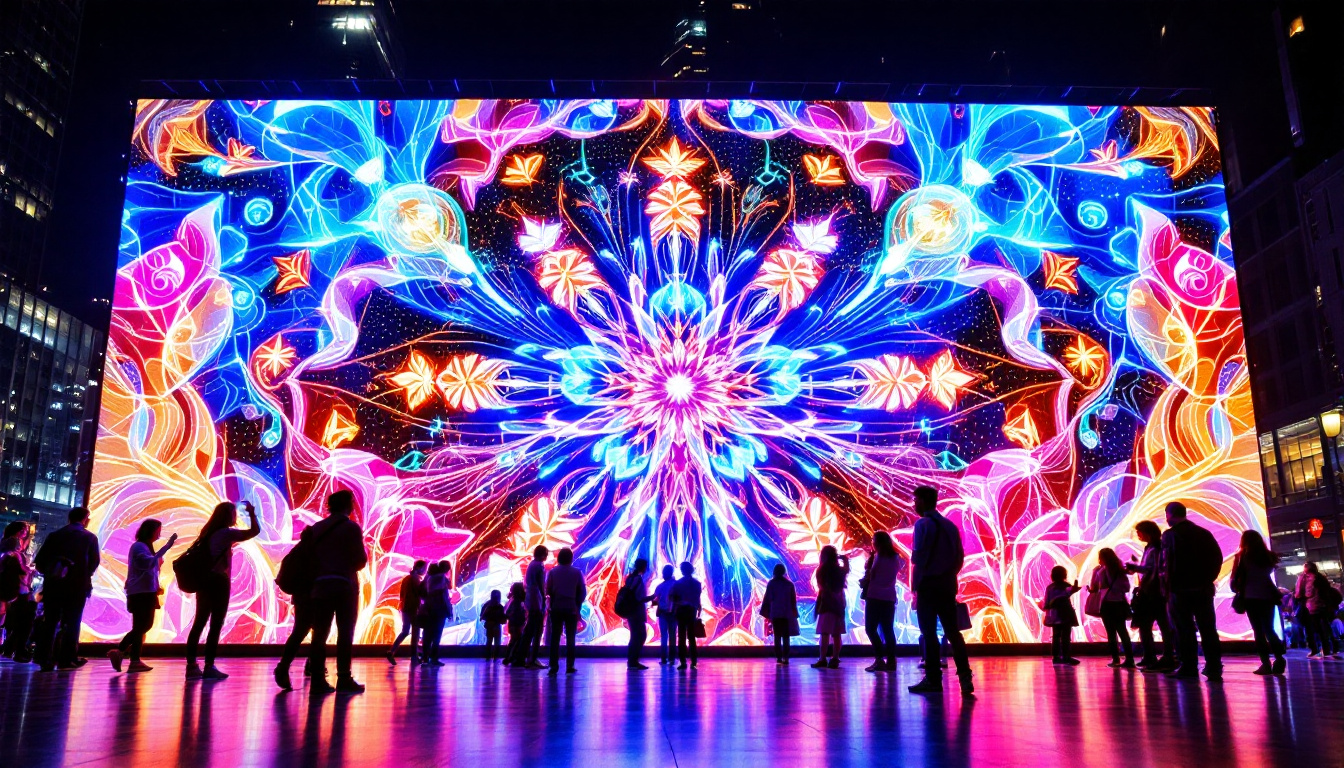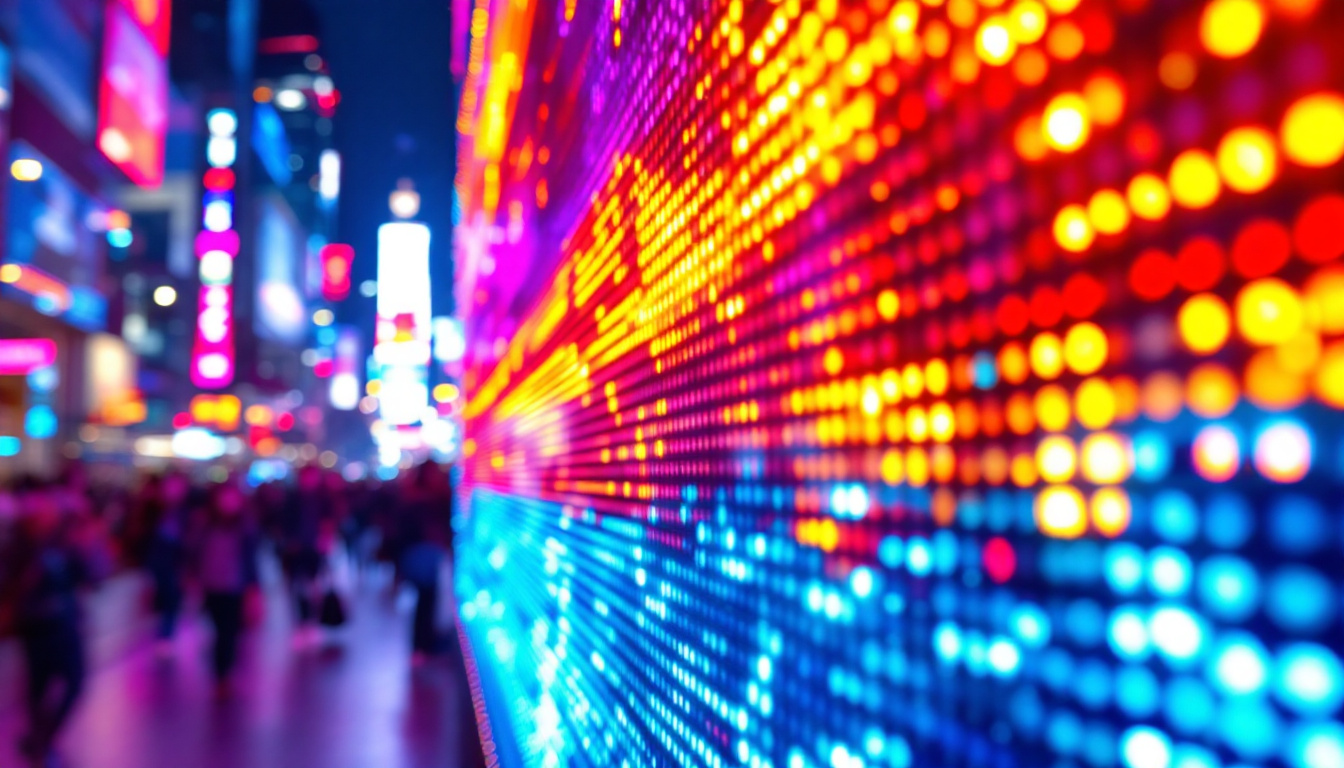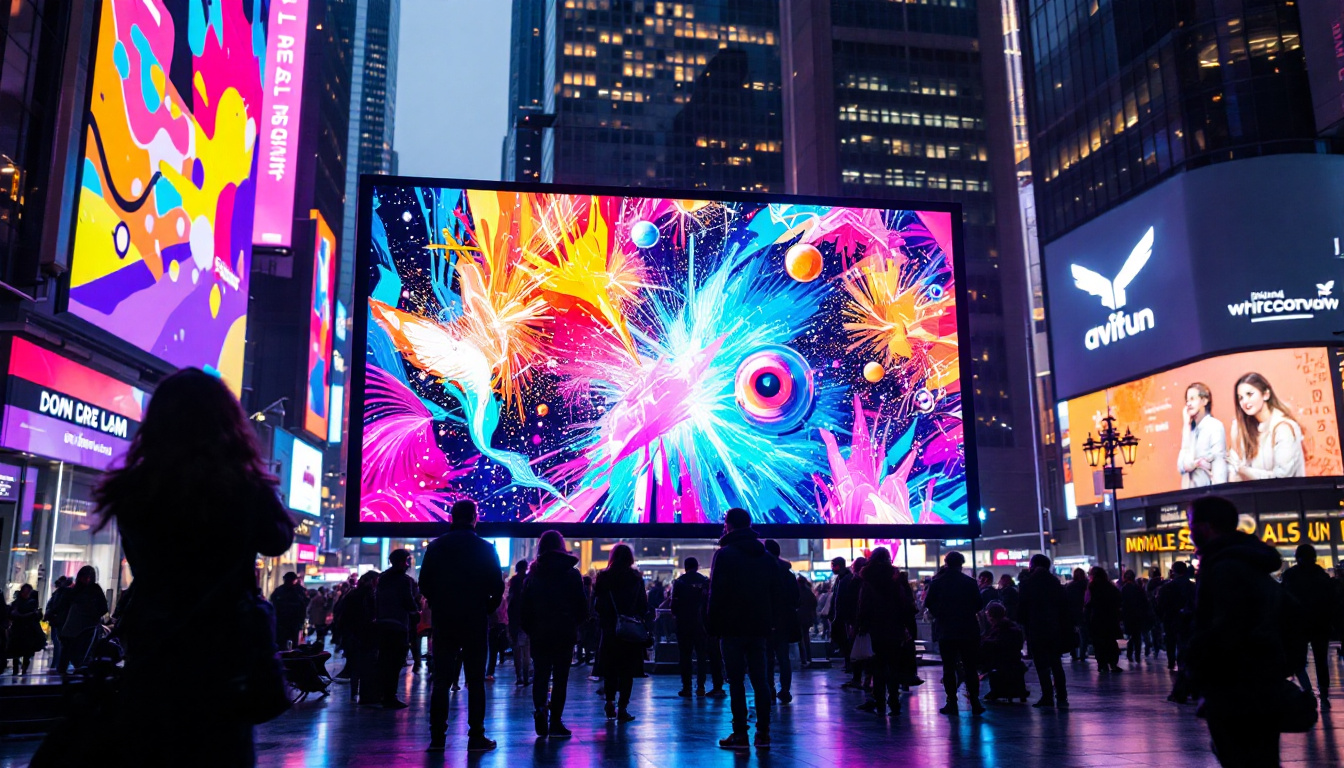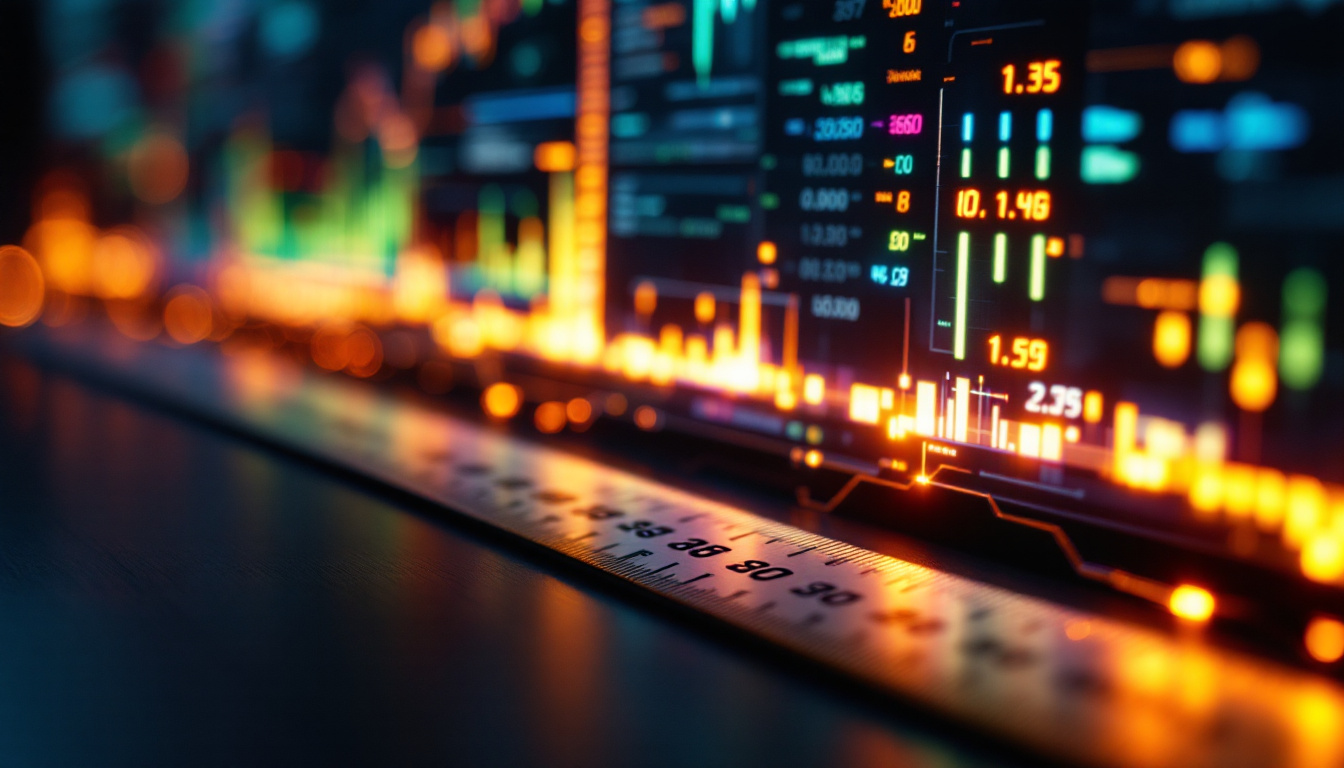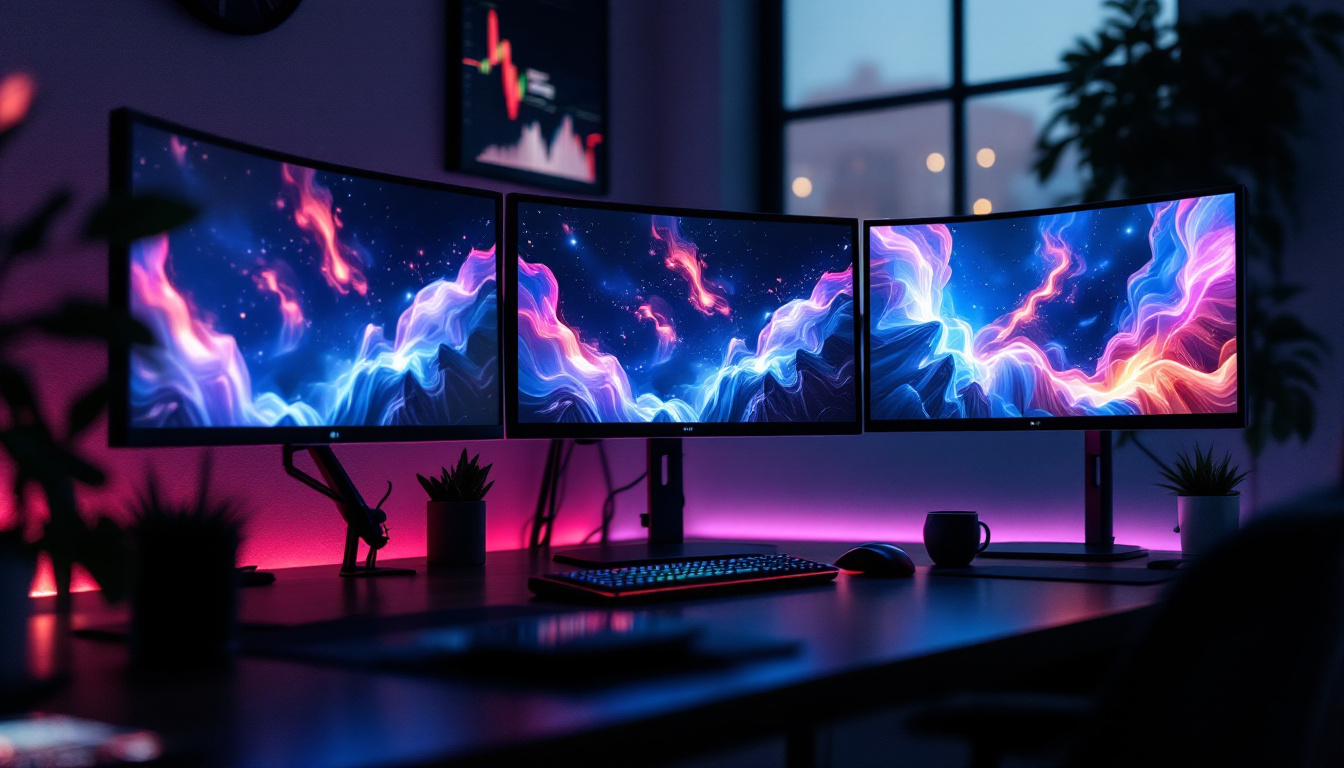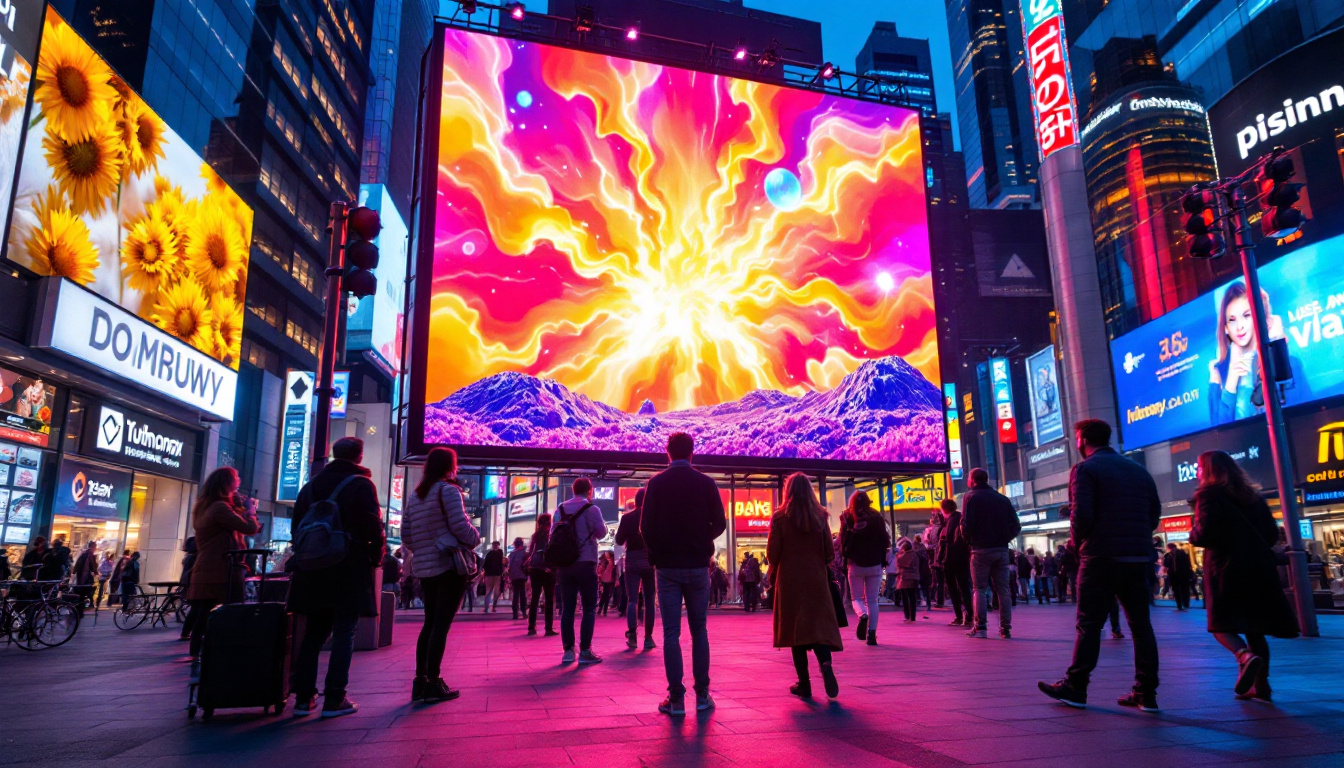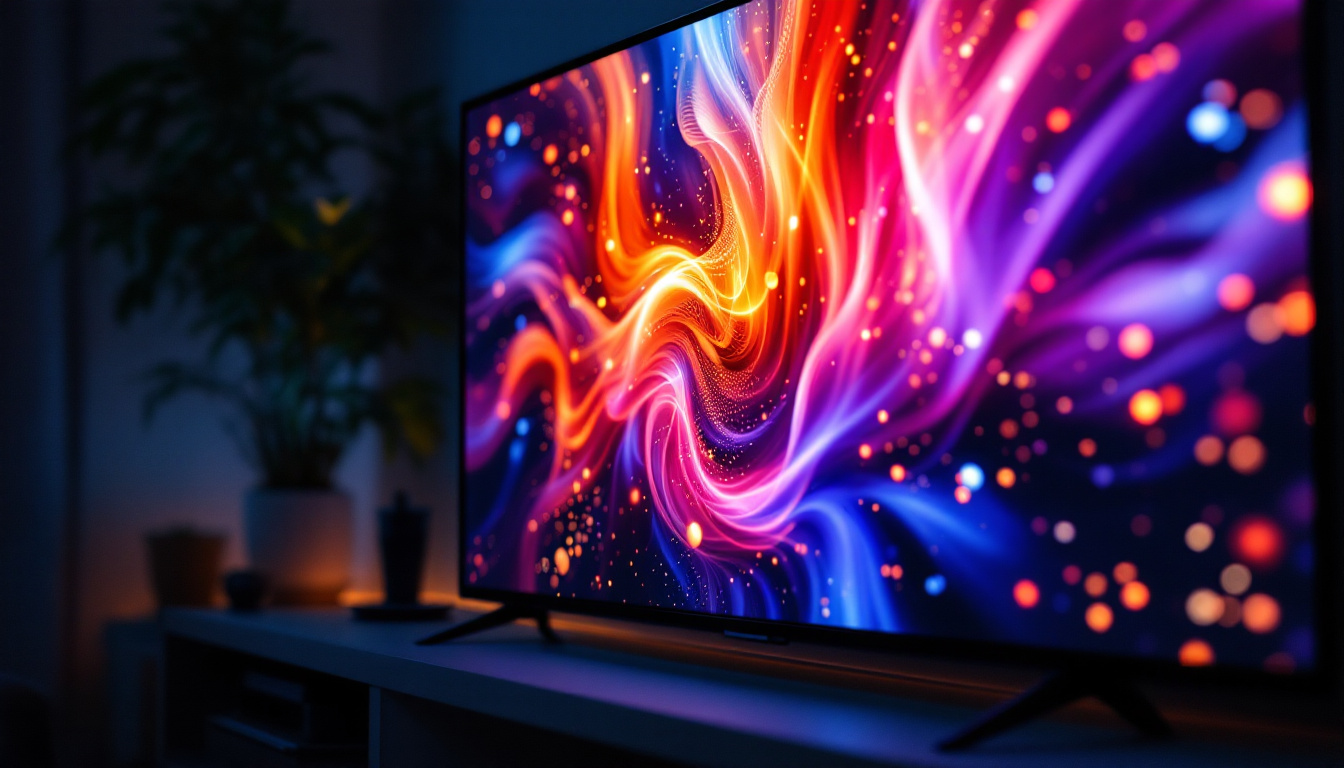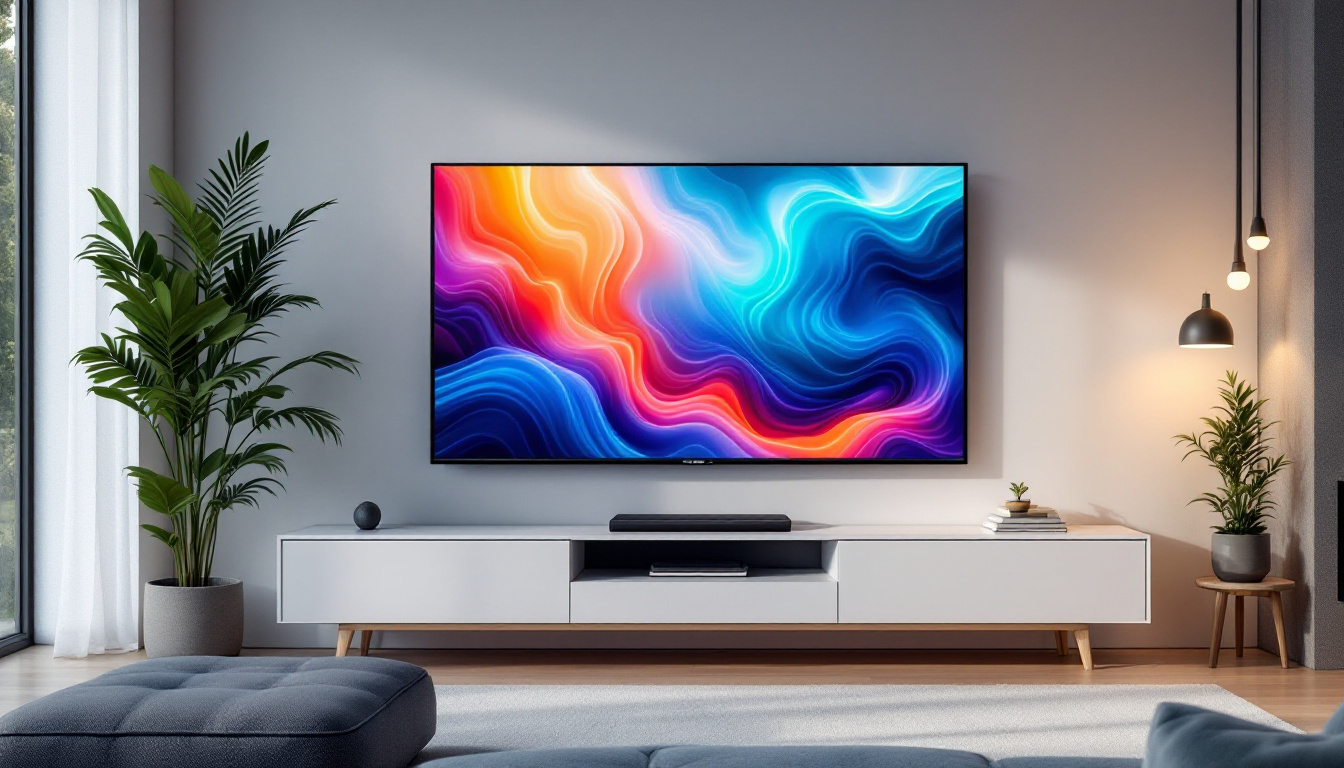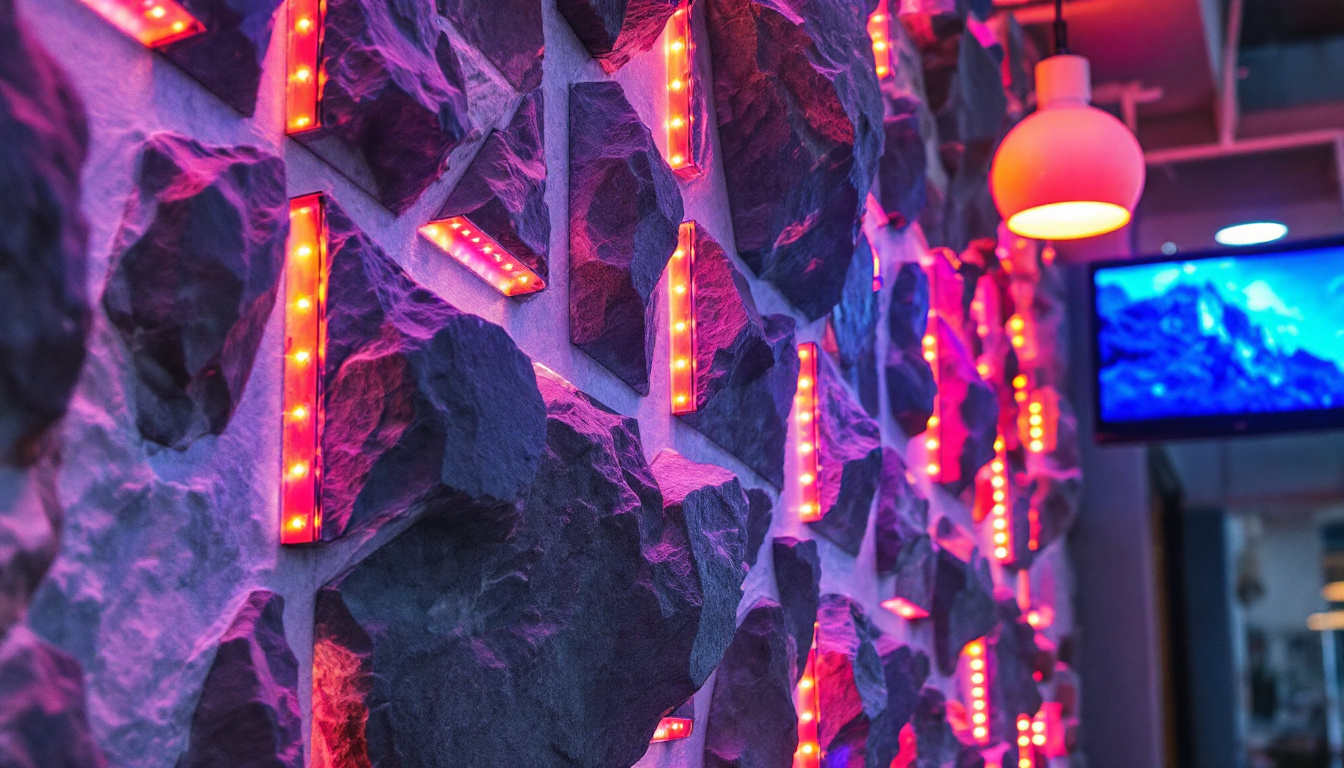In recent years, LED displays have emerged as a dominant force in the world of visual technology. Their versatility, energy efficiency, and vibrant color reproduction have made them the go-to choice for various applications, from advertising to entertainment. This article delves into the intricacies of LED displays, exploring their technology, applications, and the trends shaping their future.
Understanding LED Technology
Light Emitting Diodes (LEDs) are semiconductor devices that emit light when an electric current passes through them. This technology has evolved significantly since its inception, leading to the development of LED displays that are now ubiquitous in both indoor and outdoor environments. The versatility of LEDs has made them a popular choice for a wide range of applications, from simple indicator lights to complex video walls that enhance the visual experience in entertainment venues and public spaces.
How LED Displays Work
At the core of an LED display are numerous tiny LEDs arranged in a grid. Each LED can emit red, green, or blue light, and by combining these colors in varying intensities, a full spectrum of colors can be produced. This RGB (Red, Green, Blue) model is fundamental to how images and videos are rendered on LED screens. The ability to control each pixel’s brightness and color independently allows for dynamic content that can adapt to different environments and audience needs.
The display’s resolution is determined by the number of pixels it contains. Higher pixel density results in sharper images, which is crucial for applications where visual clarity is paramount, such as in digital signage or large-scale events. Additionally, advancements in technology have led to the development of ultra-high-definition (UHD) displays, which boast resolutions that exceed traditional HD standards, providing an even more immersive viewing experience. This is particularly beneficial in settings like sports arenas, where capturing the audience’s attention with vibrant visuals can enhance the overall atmosphere.
Types of LED Displays
LED displays come in various types, each designed for specific applications. The two primary categories are:
- Direct View LED Displays: These displays consist of individual LEDs that create images directly. They are commonly used for billboards and large outdoor screens, where their brightness and visibility are unmatched even in direct sunlight.
- LED Backlit Displays: In this type, LEDs are used to illuminate an LCD panel from behind. This technology is prevalent in televisions and computer monitors, offering improved color accuracy and energy efficiency compared to traditional fluorescent backlighting.
Each type has its advantages and disadvantages, making it essential to choose the right one based on the intended use. For instance, while direct view LED displays are ideal for outdoor advertising due to their durability and brightness, LED backlit displays are often preferred for home entertainment systems where color depth and contrast are critical. Furthermore, the emergence of flexible LED displays has opened new possibilities in design, allowing for curved or irregular shapes that can fit into a variety of architectural contexts, thus enhancing aesthetic appeal while maintaining functionality.
Applications of LED Displays
LED displays have found their way into numerous industries, transforming how information is conveyed and experiences are enhanced. Their adaptability allows them to serve various purposes, from advertising to entertainment.
Advertising and Marketing
One of the most prominent applications of LED displays is in advertising. Billboards and digital signage have evolved from static images to dynamic, eye-catching displays that can change content in real-time. This capability allows advertisers to target specific audiences at different times of the day, maximizing engagement and effectiveness.
Moreover, the brightness and vibrancy of LED displays ensure that advertisements stand out, even in bright daylight. This makes them an ideal choice for outdoor marketing campaigns, where visibility is crucial. Additionally, the integration of sensors and data analytics allows advertisers to tailor their messages based on foot traffic, weather conditions, and even the demographics of passersby, further enhancing the relevance of their campaigns.
Entertainment and Events
In the entertainment industry, LED displays have revolutionized the way audiences experience live performances. Concerts, festivals, and sporting events utilize large LED screens to enhance visual storytelling, providing immersive experiences that captivate audiences.
These displays can be configured in various shapes and sizes, allowing for creative setups that complement the performance. From stage backdrops to interactive installations, LED technology has opened new avenues for artistic expression. Furthermore, the ability to synchronize LED displays with sound and lighting effects creates a cohesive atmosphere that elevates the overall experience, making each event memorable. The use of LED walls in venues also allows for real-time audience engagement through social media feeds and live polls, fostering a sense of community among attendees.
Corporate and Educational Use
LED displays are increasingly being adopted in corporate environments for presentations, conferences, and training sessions. Their ability to deliver high-quality visuals makes them an effective tool for communication, ensuring that messages are conveyed clearly and engagingly.
In educational settings, LED displays serve as interactive learning tools, enabling teachers to present information in dynamic formats. This not only enhances student engagement but also facilitates better retention of information. Moreover, the incorporation of touch technology in LED displays allows for interactive lessons where students can participate directly, fostering collaboration and critical thinking. Schools and universities are also using these displays to showcase achievements, announcements, and upcoming events, creating a vibrant and informative environment that keeps students and faculty connected and informed.
Trends Shaping the Future of LED Displays
The LED display industry is constantly evolving, driven by technological advancements and changing consumer preferences. Several trends are currently shaping the future of this dynamic field.
Advancements in Technology
As technology progresses, LED displays are becoming more sophisticated. Innovations such as microLED and MiniLED technology are pushing the boundaries of resolution and color accuracy. MicroLED displays, for instance, offer higher pixel density and improved energy efficiency, making them suitable for high-end applications.
Furthermore, advancements in flexible LED technology are allowing for displays that can bend and conform to various surfaces, opening up new possibilities for creative installations.
Environmental Considerations
With growing awareness of environmental issues, there is an increasing demand for sustainable LED display solutions. Manufacturers are focusing on creating energy-efficient products that consume less power while maintaining high performance. Additionally, efforts are being made to recycle and repurpose old LED displays, reducing electronic waste.
These environmental considerations are not just beneficial for the planet; they also resonate with consumers who are increasingly prioritizing sustainability in their purchasing decisions.
Integration with Smart Technology
The integration of LED displays with smart technology is another trend that is gaining traction. Smart displays can connect to the Internet of Things (IoT), allowing for real-time data updates and remote management. This capability is particularly advantageous for businesses that require timely information dissemination.
Moreover, the incorporation of artificial intelligence (AI) in LED displays can enhance user experience by personalizing content based on viewer preferences and behaviors. This level of interactivity is expected to become a standard feature in the future.
Challenges in the LED Display Market
Despite the many advantages and trends favoring LED displays, the market faces several challenges that could impact growth and adoption rates.
Cost Considerations
While the prices of LED technology have decreased over the years, the initial investment for high-quality LED displays can still be significant. This cost can be a barrier for small businesses and organizations looking to adopt this technology.
However, as technology continues to advance and production processes become more efficient, it is expected that prices will continue to decrease, making LED displays more accessible to a broader audience.
Technical Limitations
Despite their many benefits, LED displays are not without limitations. Issues such as color uniformity, viewing angles, and refresh rates can affect the overall performance of the display. Manufacturers are continually working to address these technical challenges to improve the quality and reliability of their products.
Market Saturation
The rapid growth of the LED display market has led to increased competition, resulting in market saturation. Companies must differentiate themselves through innovation, quality, and customer service to stand out in this crowded landscape.
The Future of LED Displays
As LED technology continues to evolve, the future looks bright for LED displays. With advancements in technology, growing applications, and a focus on sustainability, the potential for growth in this sector is immense.
Emerging Markets
Emerging markets present significant opportunities for LED display manufacturers. As developing countries invest in infrastructure and urbanization, the demand for LED displays in advertising, transportation, and public information systems is likely to increase.
Furthermore, as internet connectivity improves globally, the integration of smart technology with LED displays will become more prevalent, driving further adoption.
Innovative Applications
The creative potential of LED displays is limitless. Future applications may include augmented reality (AR) and virtual reality (VR) experiences, where LED technology plays a crucial role in delivering immersive environments. Additionally, the use of LED displays in automotive and smart home technologies is expected to grow, providing new avenues for innovation.
Conclusion
In conclusion, LED displays have transformed the way information is presented and consumed across various industries. Their versatility, coupled with ongoing advancements in technology and a focus on sustainability, positions them as a key player in the future of visual communication. As the market continues to evolve, embracing these changes will be essential for businesses and organizations looking to leverage the full potential of LED technology.
Explore the Future of Visual Technology with LumenMatrix
Ready to elevate your visual communication and captivate your audience like never before? Discover LumenMatrix’s innovative LED display solutions, where cutting-edge technology meets creative design. From vibrant Indoor and Outdoor LED Wall Displays to dynamic Vehicle and Sports LED Displays, LumenMatrix offers a wide array of products tailored to your unique needs. Experience the revolution in digital signage and create unforgettable visual experiences. Check out LumenMatrix LED Display Solutions today and step into the future of visual storytelling.

